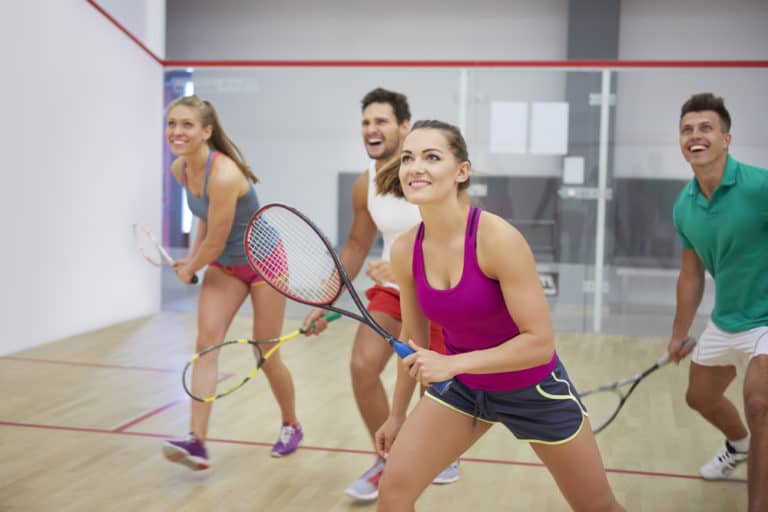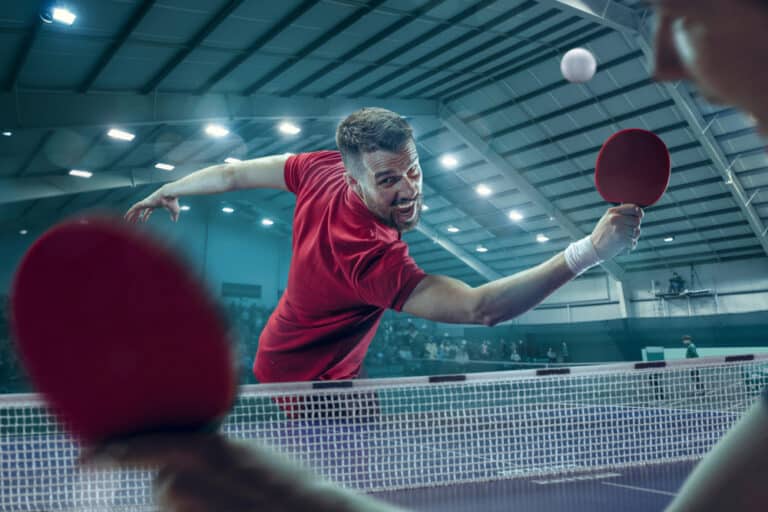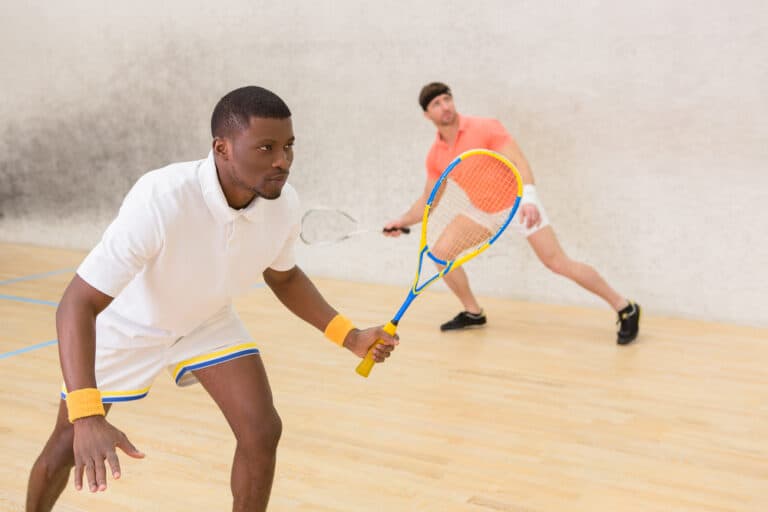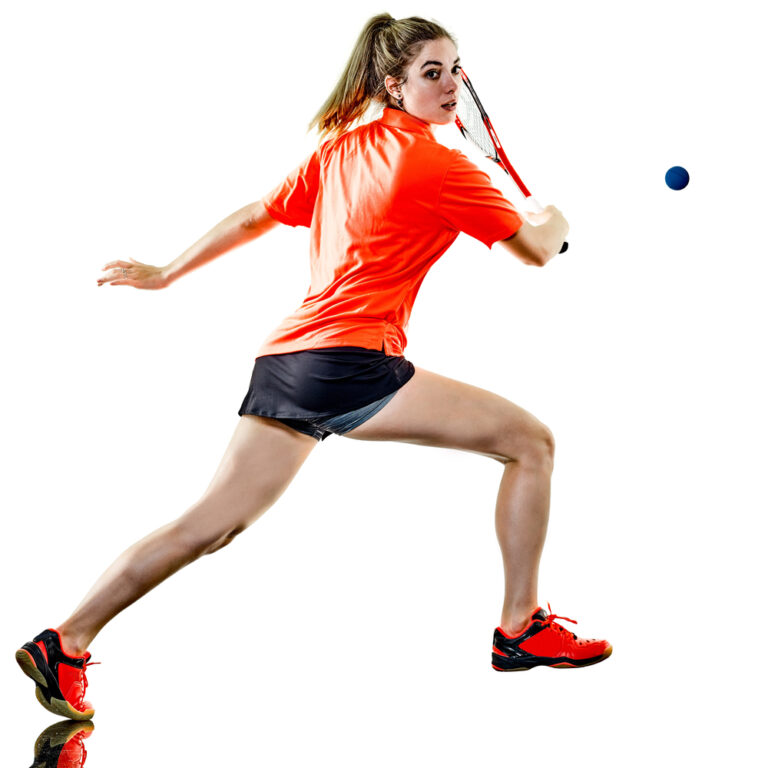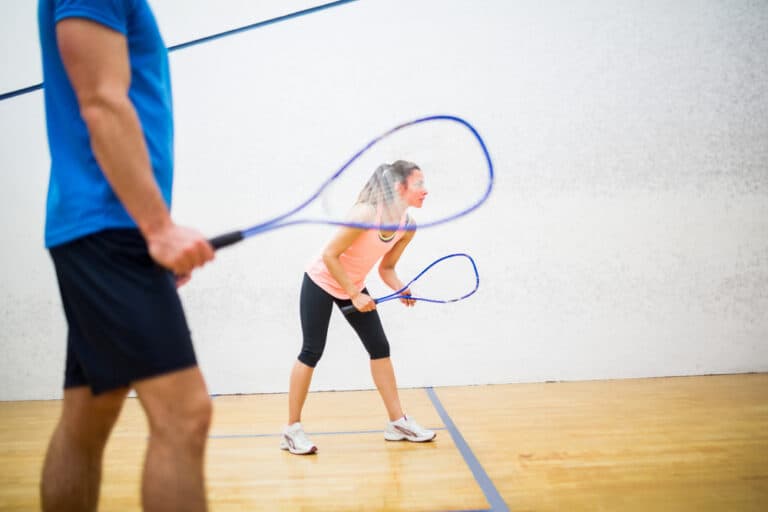How Do You Get Good At Squash?
Squash is a fast-paced and high-intensity game played on an enclosed court, and the players both play on the same side of the court, as opposed to something like tennis. This one-on-one game (sometimes instances of doubles) requires an outstanding level of fitness and skill to become truly good at it, but you might be scratching your head and wondering how one improves their game.
Becoming good at squash takes time and dedication; you need to focus on various components such as learning multiple shot types and how to strategize, footwork, ball control, and gaining hand-eye coordination. Overall fitness and conditioning also come into play, and so does experience.
Frequency of practice is also vital in upping your squash level and ensuring that you stick to a proper routine. You will need to learn to master all components that come into play in this game to become a well-rounded player. This is important because if you lack in one area, you could cause your overall performance to be affected. But do not fear; follow the tips below, and you will improve.
Improving Your Squash Game
There is an array of ways that you can get better at squash and start playing at the level you desire. Additionally, it would help if you focused on all the areas we suggest and more so you can get good at the game. We shall run through some of the main points within this post on improving your game, but there are other things to keep in mind.
One of the first things is to get a proper routine; set aside specific times on various days of the week and stick to them. Do not allow yourself to fall into the habit of missing training sessions. Some people want immediate results, but consistency is key to improving. The more frequently you do something, the better you will become at it.
Learn to have a game plan if you are playing matches in tournaments. Weigh up your opponent as quickly as you can and decide which tactics (which you have been practicing) you will put into play within the game. There is very little time to think while you are on the court; you need to be quick on your toes and be able to react instantaneously.
Part of the game plan, and a vital component of squash, is to dominate the “T”. Squash is based around the “T”, and learning to maintain control of this area of the court will see you playing a far better game. For one, it enables you to move to the rest of the court more efficiently, and you do not have to run around as much, chasing the ball around. So hit your shot and get back to that point.
Mix up your game when needed and use deception; yes, it may be sneaky and annoys your opponent, but it is a brilliant skill to master. To be able to do this, you need the experience to know how to read your opponent and pay attention to their habits and weaknesses and capitalize on that by playing “trick” shots or faking one play for another.
Practice By Yourself To Improve Your Squash Game
Professional players have the luxury of spending hours on and off the court training in preparation for their games. But the average amateur player who plays league or on a recreational basis is not afforded these same luxuries. We get busy with many other commitments, such as work, family, and social life. Additionally, we may have other sports and hobbies we engage in.
That is why it is crucial to spend the time you dedicate to your squash training in the most productive manner possible. Professional players do not only play practice games as part of their training, and neither should you. There are many other things that you can employ to help improve your game, such as doing strength training, yoga (for flexibility), and also solo practices.
Something you will find that professional players do and why they are so good is they dedicate specific sessions to solo training, as it has an array of benefits. It may not be as much fun or glamorous to get on the court by yourself, but squash is a unique sport in that you do not need a partner to have a highly productive and fruitful training session.
Focus on an array of things while on the court, from fitness, honing specific shots and techniques (so that when you play someone, you have already mastered them), your general movement around the court, and analyzing your strengths and weaknesses. If you find, for instance, your backhand is remarkably subpar, then spend the time driving the ball down the wall until it improves.
Practice Your Movement Around The Squash Court
As noted, you are advised to learn and develop proper movement on the court. Squash requires flexibility and agility in your actions; you need to be able to utilize both open and closed movement patterns and maintain a racket position (raised and ready) that will aid in swift movements when you swing through and strike the ball.
Open movements are when you maneuver laterally across the court in a sort of shuffle without crossing one foot over the other. In contrast, closed movements refer to rotating your hips and crossing one foot over the other to reach the ball. You need to be proficient in both manners of moving around the court to play a good game.
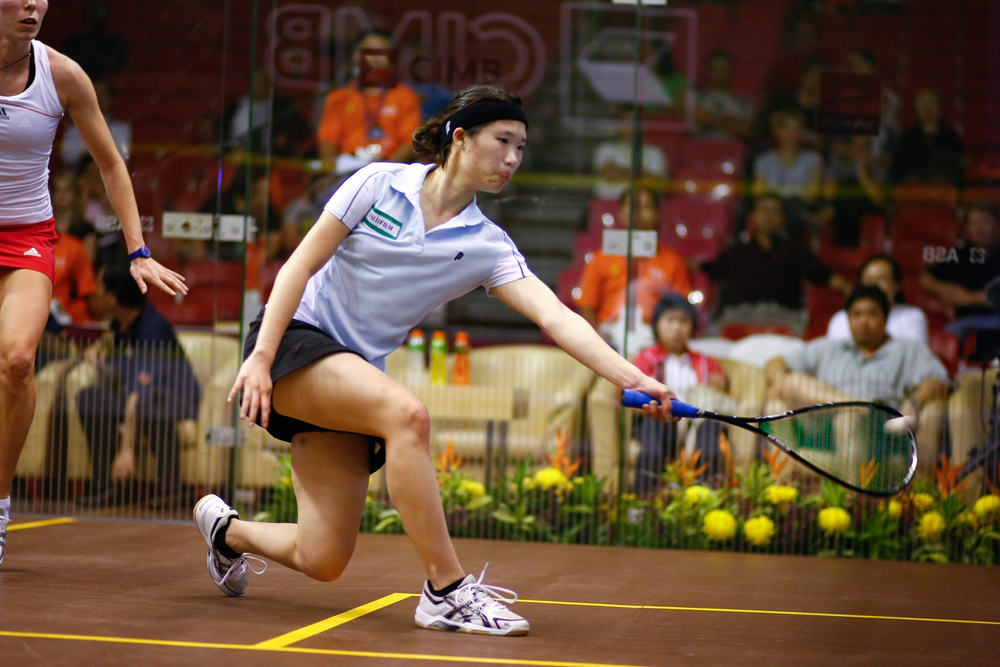
Learn To Utilize Different Types Of Shots In Squash
Apart from all these other things, you need to master the technique of the various types of shots used in squash and know when and how to use them. Your bread and butter in squash, and the standard shot you will play repeatedly is a straight drive (length shot).
Players drive the ball down the wall keeping it tight, and then potentially play an unexpected shot after a short time spent in the rally. Drop shots are one of these potential shots, often played off the back wall (softer than other shots), and the aim is to have it come off the front wall in a way that causes your opponent to chase after it before it bounces twice.
Alternatively, you can use cross-court shots to make your opponent run across the court. If you are clever, you can fake a straight drive and then play a cross-court shot that will force your opponent to move to the other side of the court, allowing you to regain dominance of the “T”.
They will likely either drive it or, if they get there late, they will resort to a drop shot that you will manage to reach with ease. Finally, another popular shot that can be highly effective is the lob shot. This is played when you are closer to the front of the court. Angle the racket face up slightly and aim to hit the ball above the service line. The ball should land in the back corner and hopefully die.
Conclusion
In closing, we recommend that playing more squash is the best way to get good at squash. Get on the court, and put in the work. Solo practice is great because it allows you to focus and hone in on the areas you need to get the hang of. Learn to move around the court effortlessly and master all forms of shots. Finally, learn to dominate the “T”, as holding the center of the court is essential.
References
- https://www.wikihow.com/Become-a-Squash-Champ
- https://www.howicksquash.co.nz/coaching/squash-tips/
- https://squashskills.com/blog/-/3-things-you-can-do-to-become-a-better-squash-player-205/
- https://www.squashplayer.co.uk/nicols_top_tips.htm
- https://www.squashsource.com/how-to-play-squash/
- https://www.squashpoint.com/blogs/blog/3-tips-to-improve-your-game-quickly/
- http://www.squashauckland.org.nz/newsarticle/98366?newsfeedId=954327


